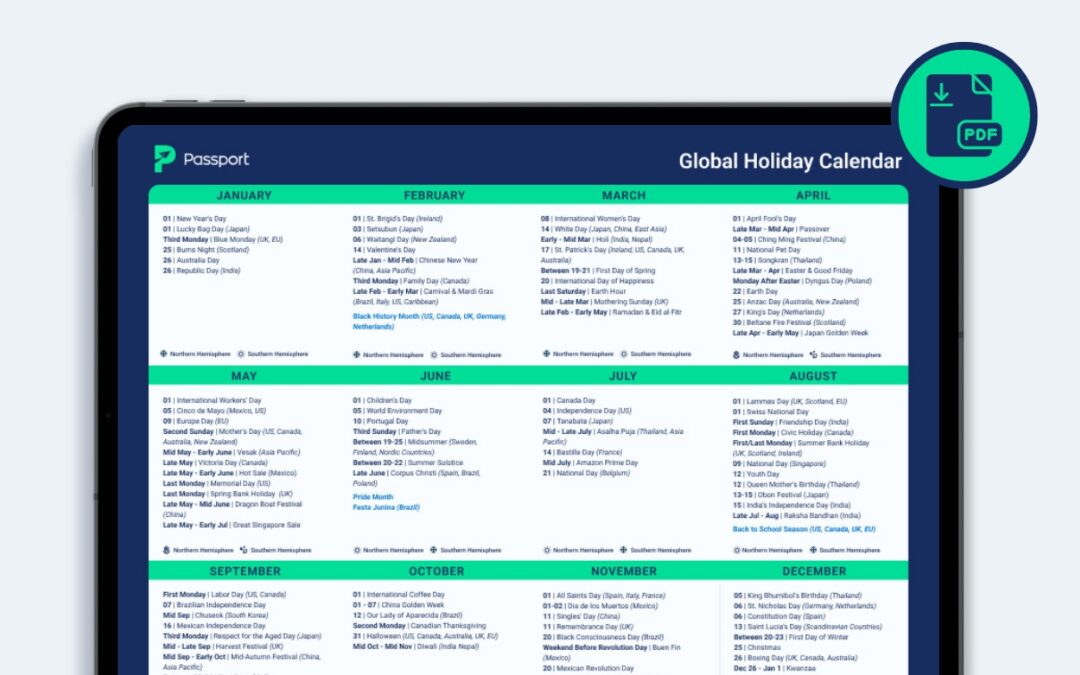Ready to make this peak season your most profitable yet? The holidays are almost here, which means now is the perfect time to expand your brand globally. With the right ecommerce strategies, you can tap into international demand, convert more customers with localized experiences, and drive profitable growth. Leverage this opportunity to reach new audiences and set your business up for continued success into the new year. In this article, we’ll share our top 6 tips to help you boost international sales this holiday season.
1. Capitalize on International Demand
Expanding into international markets in time for peak season can significantly boost your ecommerce sales. Start by analyzing web data to identify which regions show the highest demand for your products. These insights can help you make informed decisions about where to focus your efforts. Check out this article for insights on the top global markets that have been successful for other direct-to-consumer brands.
To simplify and speed up your expansion efforts, consider partnering with an international solutions provider like Passport. Our all-in-one internationalization service, Passport Global, handles everything from shipping to compliance and growth advisory, offering expert guidance and support to ensure quicker market entry and profitable scaling. This approach not only makes navigating international logistics easier but also allows you to expand your reach and serve customers all around the world without the complexities that typically come with crossing borders.

2. Localize Strategies for Global Markets
To truly resonate with a global audience and maximize your ecommerce sales during the holidays, embracing localization is essential. When shoppers see that you understand and cater to their cultural preferences, they’re more likely to complete their purchases, reducing cart abandonment and improving conversions.
Here are some of the best ways for brands to deliver a localized experience:
- Convert prices and accept payments in local currencies
- Test pricing strategies (ex. including duty, taxes, and shipping in product prices)
- Integrate region-specific payment options
- Customize shipping options to match market expectations
- Create campaigns around global holidays
- Translate website content into local languages
- Tailor your website and messaging to cultural norms
This level of personalization lets buyers browse, understand, and pay in a familiar format, broadening your market reach and deepening customer connections to encourage loyalty and repeat business.
3. Ensure Reliable International Shipping
Meeting shoppers’ delivery speed expectations is crucial for maintaining customer satisfaction, especially during peak season when demand increases significantly. Partnering with a reliable and trusted international shipping carrier can ensure your products reach customers worldwide efficiently and on time for the holidays. An optimal solution should manage customs clearance, offer full door-to-door tracking, and include a dedicated support team to quickly resolve any issues.
Engage in open communication with your carrier to discuss expectations, review their capabilities and resources, and understand their peak season processes. Seek clarification on cut-off dates and additional services to meet holiday deadlines. Passport, for instance, offers a range of shipping speeds – from Economy to Express – enabling you to cater to different customer needs. Strategize together to align your shipping requirements and provide a seamless experience for your international customers.
4. Communicate Shipping Deadlines
Clearly inform customers of the last possible dates to place orders for on-time holiday delivery. Display these prominently at checkout and use multiple channels like website banners, email campaigns, and social media to reach your audience. Highlight any express shipping options for last-minute shoppers and provide regular updates on order statuses.
Additionally, emphasize Delivered Duty Paid (DDP) to facilitate smoother, faster delivery by handling customs duties upfront. Proactively managing customer expectations and offering transparency fosters a positive shopping experience.
5. Provide Tracking & Customer Support
Offering accurate tracking and responsive customer support is vital to building trust and creating a seamless shopping experience, particularly during the holidays when customers eagerly await deliveries. Make it easy to track orders by using a carrier with a comprehensive tracking system, allowing recipients to monitor their packages at every stage of the shipping process. Ensure this information is readily accessible through order confirmation emails and your website.
Additionally, choose an international solution that provides responsive customer support to promptly address any issues or concerns. Clear tracking and reliable support can significantly enhance the customer experience and strengthen your brand’s reputation.
6. Prepare for Returns
Returns are increasingly common during the gift-giving season, and handling international ones can be particularly challenging due to complex customs processes, higher shipping costs, and longer transit times. Ensure you have an efficient process in place, with a clear and accessible return policy on your website and straightforward instructions on how it works.
Consider using services that enable customers to easily manage returns directly on your website. As an example, Passport partners with Loop and Corso so buyers can initiate returns directly through your brand’s ecommerce platform, making the process simpler and more efficient for both the customer and your team. Alternatively, you can collaborate with your shipping carrier to offer individual return labels for international shipments. By preparing for returns, you can turn a potential hurdle into a benefit that reinforces customer trust and loyalty.

Your Passport to Peak Season Success
As the holiday season approaches, it’s the perfect time to unlock your brand’s global potential. Partnering with an international solutions provider like Passport offers quick access to international markets – often in as little as 48 hours. Our advanced logistics, technology, and global expertise enable you to provide a seamless shopping experience for customers worldwide.
With Passport Global, expanding internationally is effortless. From localized experiences and reliable shipping to in-cart duty and tax calculations, we make global selling easy so you can focus on achieving a profitable holiday season.
Make this peak season your best yet! Connect with our team today to position your brand for global success in the new year.





